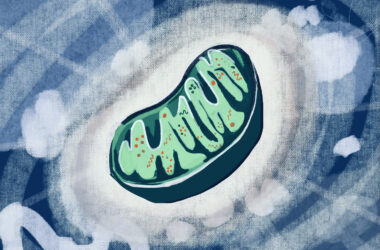 galvbayinvasives.org
galvbayinvasives.orgIn a study published last month, a team of South African scientists found that invasive species are thriving in Antarctica. The finding is yet another that points to the growing impact of invasive species.
Last week, the Tribune sat down with Anthony Ricciardi, associate professor of invasive species biology at the Redpath Museum and McGill School of Environment to discuss what he calls “global swarm.”
“Even Antarctica, which we used to view as remote and pristine, is not so remote and not so pristine anymore. It has been invaded by over 200 species,” Ricciardi said.
Species invasion is a natural phenomenon, but humans have accelerated the process.
“Under human influence, species are moving faster and farther than ever before and every part of the planet is affected,” he added.
Ricciardi cited Hawaii as an example of humans affecting invasion rates, noting that the number of new species introduced into the ecosystem has risen from one every 30,000 years to one every three weeks.
“That’s about 800,000 times faster than the natural rate,” he said.
While many invasive species fail to establish self-sufficient populations, some of them succeed and spread wildly.
“Most of the time these impacts are negligible to society, then along comes a species whose effects are too large to ignore … not only [on] ecosystems but with clear consequences for society,” Ricciardi said.
In Canada there are many examples of these high-impact species, including beetles that have been attacking Canadian forests, like the emerald ash bore which has been found in Montreal and across North America in the last few years.
“I’d imagine it has probably killed over a million [ash trees] in Ontario so far,” Ricciardi said. “This is a modern day plague.”
Aquatic ecosystems have also been hit hard. The zebra mussel, which caused serious damage to the Great Lakes ecosystem, is not the only offender.
“The European green crab, a voracious predator of shellfish that has an effect on aquaculture, is marching on two coasts.” Ricciardi said. He added that sea squirts have also caused problems by overgrowing aquaculture regions and covering the area in a gelatinous mess, suffocating the shellfish stocks.
“These are all symptoms of one large phenomenon that will not go away, that is driven by human activity that interacts with all other forms of global change such as climate change, altered nitrogen cycles (that affects invasive plants), CO2, land use disturbance, and deforestation,” he said.
The economic impacts of invasive species can add up. Ricciardi noted that, in 2002, the auditor general estimated that exotic species probably cost Canada at least $30 billion each year. In the United States, a more comprehensive study put their annual cost at $120 billion.
Ricciardi went on to say that global estimates would be somewhere on the order of a few trillion dollars.
“[That’s] at least an order of magnitude higher than what the world is paying economically as a result of climate-related disasters,” he said.
“Invasions affect all aspects of society,” Ricciardi said. “We should manage invasions as natural disasters-though they’re not so natural-with the same kind of preparedness that we have for earthquakes or floods … Most countries do not treat invasions in that way. I think it’s because they don’t see invasions as a phenomenon but rather as a set of isolated monster stories.”
Countries can control invaders by regulating transportation systems. Zebra mussels were originally introduced by ballast water, and other species can be transported on the hulls of ships. Now ships must flush ballast water before entering the St. Laurence Seaway. Emerald ash bores traveled to the United States in untreated wooden crates from China-now all wood must be treated.
“You think of a way that we’re moving around, I’ll think of a species that is hitch-hiking or taking advantage of that vector,” Ricciardi said.
Ricciardi’s lab is working on methods of predicting which species will have big impacts.
“Scientists are not interested in controlling all exotic species,” he said. “[Just] the ones that are deemed undesirable to society. We have to have risk assessment methods in place to be able to identify and prioritize these species. Without those, we’re constantly putting out fires after they’re already raging.”
His lab studies past invasions, looking for patterns in traits of invaders and environmental conditions that allow species to take root.
“We often look for repeat offenders, with the premise that if they are more or less consistent in their impact, then they will remain disruptive,” Ricciardi said.
Once these species are identified, he looks for locations where they are less successful.
“You identify the environmental conditions like temperature, water chemistry, or conductivity that control the invader,” Ricciardi said.
This can give researchers insight into which areas are vulnerable to invasion.
“We’re like ecological detectives; we have to go and figure out why something happened,” he said.
Still, understanding why an invasion occurred is not the same as predicting one.
“If you look at this as a form of pollution, what we’re dealing with is smart pollution. Unlike conventional pollution that degrades and diminishes over time, this stuff will adapt, proliferate, and spread,” Ricciardi said.








